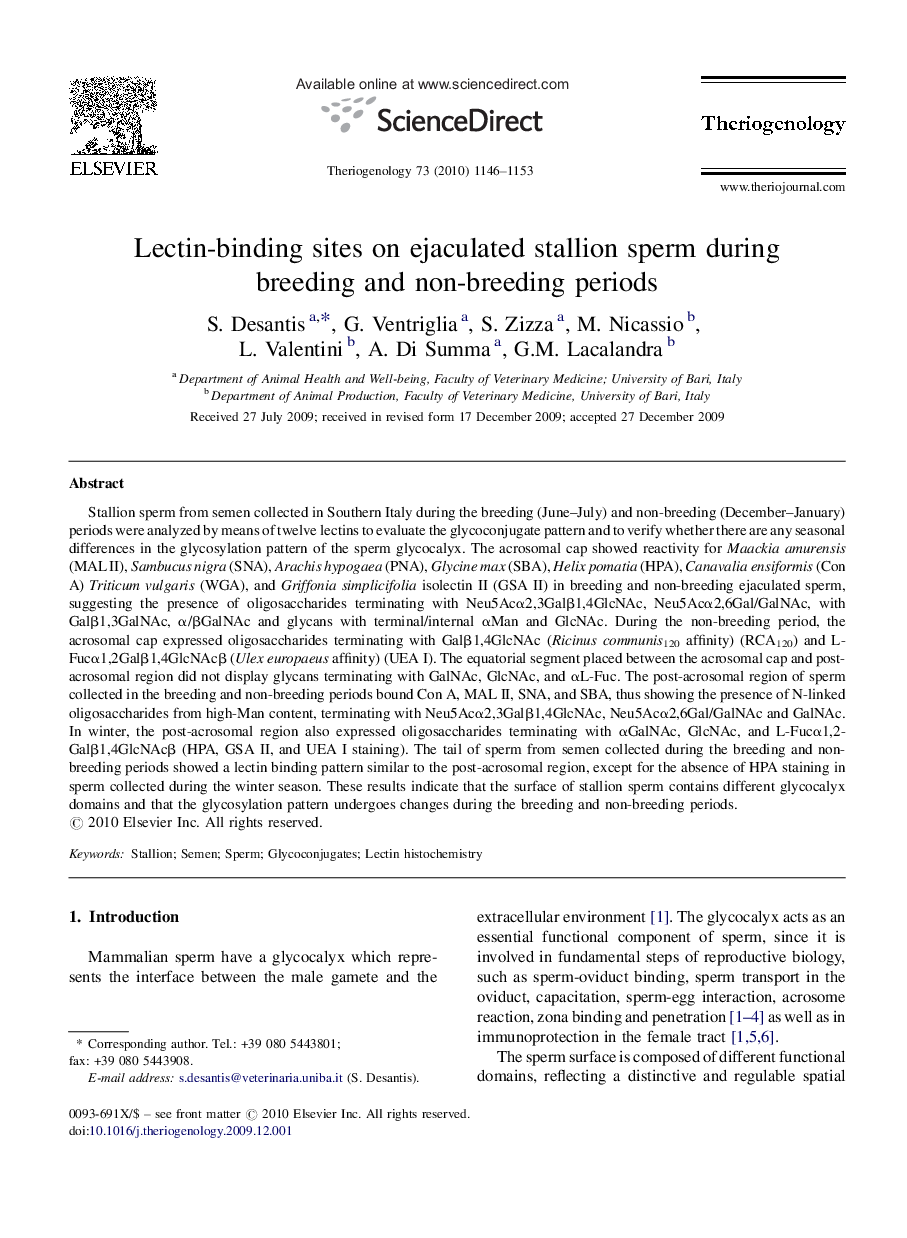| Article ID | Journal | Published Year | Pages | File Type |
|---|---|---|---|---|
| 2097904 | Theriogenology | 2010 | 8 Pages |
Stallion sperm from semen collected in Southern Italy during the breeding (June–July) and non-breeding (December–January) periods were analyzed by means of twelve lectins to evaluate the glycoconjugate pattern and to verify whether there are any seasonal differences in the glycosylation pattern of the sperm glycocalyx. The acrosomal cap showed reactivity for Maackia amurensis (MAL II), Sambucus nigra (SNA), Arachis hypogaea (PNA), Glycine max (SBA), Helix pomatia (HPA), Canavalia ensiformis (Con A) Triticum vulgaris (WGA), and Griffonia simplicifolia isolectin II (GSA II) in breeding and non-breeding ejaculated sperm, suggesting the presence of oligosaccharides terminating with Neu5Acα2,3Galβ1,4GlcNAc, Neu5Acα2,6Gal/GalNAc, with Galβ1,3GalNAc, α/βGalNAc and glycans with terminal/internal αMan and GlcNAc. During the non-breeding period, the acrosomal cap expressed oligosaccharides terminating with Galβ1,4GlcNAc (Ricinus communis120 affinity) (RCA120) and L-Fucα1,2Galβ1,4GlcNAcβ (Ulex europaeus affinity) (UEA I). The equatorial segment placed between the acrosomal cap and post-acrosomal region did not display glycans terminating with GalNAc, GlcNAc, and αL-Fuc. The post-acrosomal region of sperm collected in the breeding and non-breeding periods bound Con A, MAL II, SNA, and SBA, thus showing the presence of N-linked oligosaccharides from high-Man content, terminating with Neu5Acα2,3Galβ1,4GlcNAc, Neu5Acα2,6Gal/GalNAc and GalNAc. In winter, the post-acrosomal region also expressed oligosaccharides terminating with αGalNAc, GlcNAc, and L-Fucα1,2Galβ1,4GlcNAcβ (HPA, GSA II, and UEA I staining). The tail of sperm from semen collected during the breeding and non-breeding periods showed a lectin binding pattern similar to the post-acrosomal region, except for the absence of HPA staining in sperm collected during the winter season. These results indicate that the surface of stallion sperm contains different glycocalyx domains and that the glycosylation pattern undergoes changes during the breeding and non-breeding periods.
